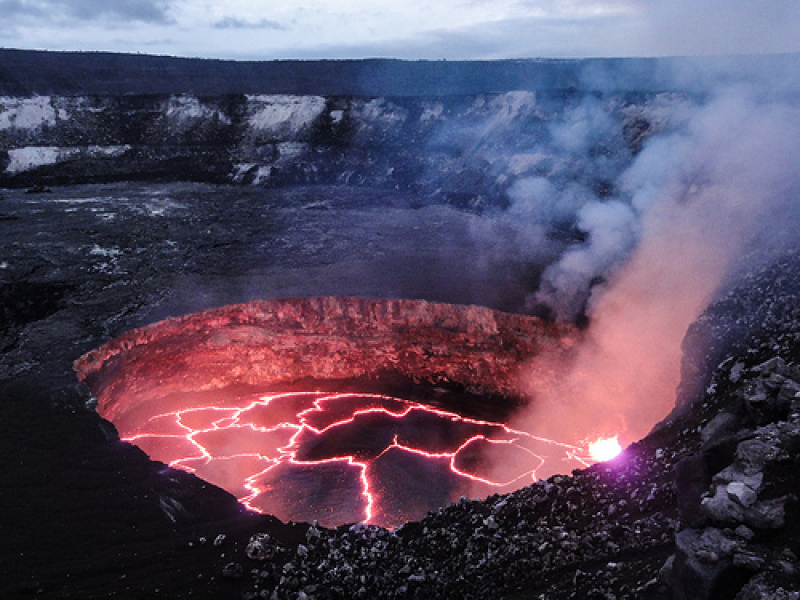
The lava flow in Hawaii from the Kilauea Volcano's eruption continues to move and could possibly enter a highway leading to Pahoa Village, NYC News reported.
According to a recent update from the Hawaii County Civil Defense and United States Geological Survey Hawaiian Volcano Observatory, the front end of the flow is within 75 yards of a drainage ditch. If it enters the ditch, the lava could flow towards Highway 130.
Kilauea is considered as one of the most active volcanoes in the island of Hawaii. Although it erupted on June 27 of last year, the molten magma it spewed still continues to flow and threaten the nearby residential town of Pahoa, according to Reuters.
Tim Orr, a geologist from the Hawaiian Volcano Observatory reported that breakouts from the main lava flow could enter a steep ditch and cross Highway 130. This could put the molten rock only a kilometer away from the Makuu Farmers Market.
"The breakouts, are also referred to as lobes, are moving toward the north-northeast," he said in a statement. "If the breakout, which is described as having two 'fingers' continues a path down the drainage ditch, it could at some point reach Highway 130."
Fortunately, the lava flow and the drainage ditch are separated by a two-mile upslope which has helped in slowing down its movement.
However, Janet Babb of the USGS warned that even though the speed of the lava flow is decreasing, it could still endanger the Pahoa Village if it continues moving through its current path.
"Any of these breakouts, if they remain active, could head toward the community of Pahoa," she said in a press release. "Even if lava doesn't flow directly into the town, it could cross Highway 130 and isolate Pahoa, which is still an impact to the community."
Aside from threatening residential populated areas, the lava has already caused a 150-acre bushfire on Tuesday. The Hawaii Fire Department reported through a press release that the fire has already been contained and ensured that it does not pose a threat to residential and commercial areas.



















